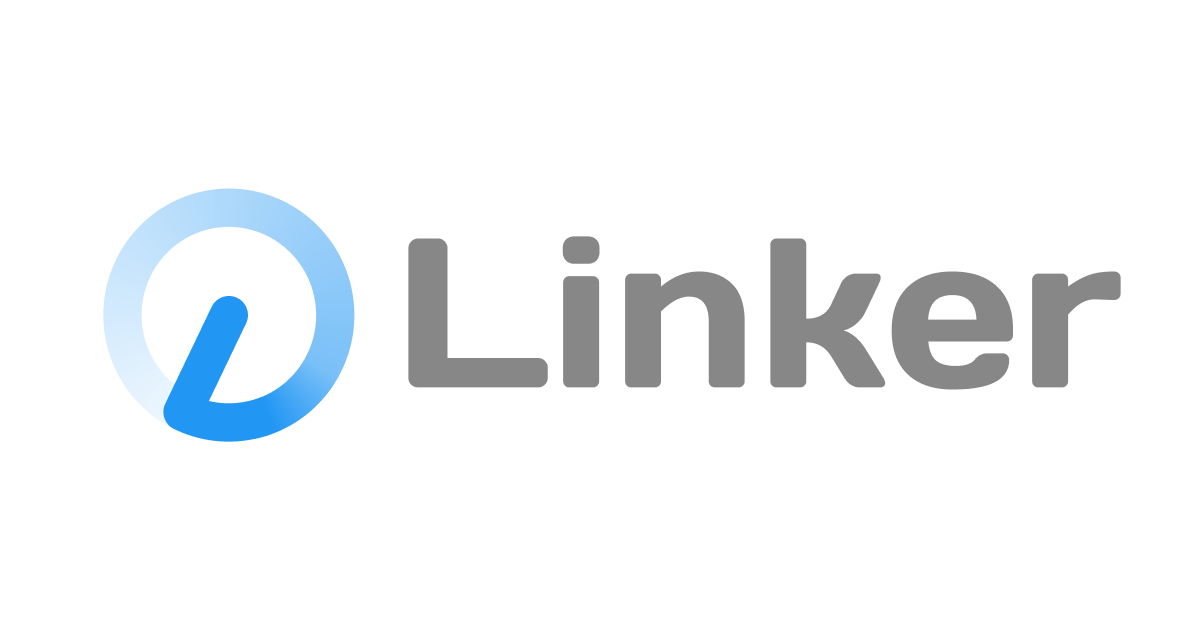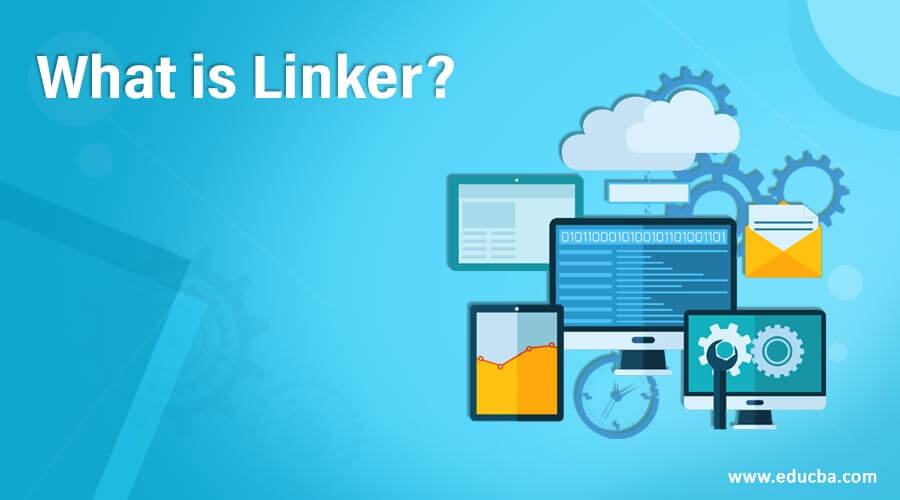Linker Technologies: Connecting Software Components
Linker technologies set the stage for the seamless operation of software applications. These essential tools act as the glue that binds together different parts of a program, enabling them to […]

Linker technologies set the stage for the seamless operation of software applications. These essential tools act as the glue that binds together different parts of a program, enabling them to work harmoniously. Linkers bridge the gap between individual modules, libraries, and executables, ensuring that all components interact correctly.
Imagine a complex symphony orchestra where each musician represents a separate software module. The linker acts as the conductor, orchestrating the interplay between these musicians, ensuring that each note and instrument work together to create a beautiful and harmonious performance.
Introduction to Linker Technologies
Linkers are essential tools in the software development process, acting as the bridge between compiled code modules and the final executable program. They take the output of compilers, which are collections of machine instructions, and combine them into a single, cohesive program that can be executed by the operating system. Linkers play a crucial role in resolving references between different code modules, ensuring that functions and variables are correctly connected and accessible across the entire program.
Historical Evolution of Linker Technologies
The evolution of linker technologies has paralleled the advancements in software development, reflecting the increasing complexity of software systems. Early linkers were simple tools that primarily focused on combining object files. As programming languages and software architectures became more sophisticated, linkers evolved to handle more complex tasks, such as dynamic linking, relocation, and symbol resolution.
- Early Linkers (1950s-1960s): Early linkers were primarily used for combining object files generated by assemblers. These linkers were simple and often had limited capabilities, such as resolving external references.
- Modern Linkers (1970s-Present): Modern linkers are highly sophisticated tools that support a wide range of features, including dynamic linking, relocation, symbol resolution, and optimization. They are essential for building large and complex software systems.
Importance of Linkers in the Software Ecosystem
Linkers are indispensable components of the software development ecosystem, enabling the creation of modular and reusable software components. They facilitate the development of large and complex software systems by allowing developers to break down programs into smaller, manageable modules that can be independently compiled and linked together.
- Modularity and Reusability: Linkers enable the creation of modular software components that can be reused in different projects, promoting code sharing and reducing development time.
- Large-Scale Software Development: Linkers are essential for building large and complex software systems, allowing developers to manage the complexity of large code bases and facilitate collaboration between teams.
- Dynamic Linking: Dynamic linking allows programs to load and link libraries at runtime, enabling flexibility and reducing the size of executable files.
Types of Linker Technologies

Linker technologies play a crucial role in the software development process, enabling the combination of different program modules into an executable program. Understanding the various types of linkers and their characteristics is essential for choosing the appropriate approach for different software projects.
Static Linkers
Static linkers are responsible for combining all the necessary code and data from various source files into a single executable file during the compilation and linking phase. This process creates a self-contained executable that can be run without requiring additional libraries or dependencies.
Key Features of Static Linkers:
- Direct Integration: All code and data from libraries are directly incorporated into the executable file. This eliminates the need for external libraries during runtime.
- Simplified Execution: Static linking ensures a streamlined execution environment as all dependencies are packaged within the executable file.
- Deterministic Behavior: The executable’s behavior is consistent across different environments, as the linked libraries are fixed and included within the executable.
Advantages of Static Linkers:
- Performance: Static linking can lead to faster execution speeds as the code is directly loaded into memory and does not require external library lookups.
- Simplified Deployment: Static linking simplifies deployment as the executable file is self-contained and does not require additional libraries to be installed on the target system.
- Portability: Static linking can enhance portability as the executable file is independent of specific library versions or dependencies on the target system.
Disadvantages of Static Linkers:
- Larger Executable Size: Static linking results in larger executable files as all library code is included within the executable, even if only a small portion is used.
- Code Duplication: Static linking can lead to code duplication if multiple programs use the same library. This can increase the memory footprint and storage requirements.
- Difficulty in Updates: Updating shared libraries can be challenging as all programs linked statically with the old library need to be recompiled and relinked.
Dynamic Linkers
Dynamic linkers, also known as dynamic loaders, handle the linking of libraries at runtime. They resolve library dependencies and load the required code and data into memory only when needed. This approach allows for more flexible and efficient resource utilization, especially in environments where multiple programs share common libraries.
Key Features of Dynamic Linkers:
- Runtime Linking: Dynamic linkers link libraries at runtime, allowing for more flexibility in managing dependencies.
- Shared Libraries: Dynamic linking enables the use of shared libraries, where multiple programs can access the same library code in memory, reducing memory footprint and storage requirements.
- Library Updates: Dynamic linking simplifies updating shared libraries, as changes to libraries do not require recompiling and relinking all programs that use them.
Advantages of Dynamic Linkers:
- Smaller Executable Size: Dynamic linking results in smaller executable files as only the core program code is included, while library code is loaded on demand.
- Reduced Memory Footprint: Shared libraries loaded dynamically can be used by multiple programs, reducing the overall memory footprint compared to static linking.
- Easier Updates: Dynamic linking allows for easier library updates, as changes to shared libraries do not require recompilation of programs using them.
- Flexibility: Dynamic linking provides greater flexibility in managing dependencies, allowing programs to use different versions of libraries based on system configuration or user preferences.
Disadvantages of Dynamic Linkers:
- Runtime Overhead: Dynamic linking can introduce runtime overhead as the linker needs to resolve dependencies and load libraries on demand.
- Dependency Issues: Dynamic linking can lead to dependency issues if the required libraries are not available or if their versions are incompatible with the program’s requirements.
- Security Risks: Dynamic linking can introduce security risks if malicious code is injected into shared libraries, potentially compromising the integrity of the system.
Linker Processes and Operations
The linker plays a crucial role in the software development process by combining different compiled object files and libraries into a single executable program. This process involves several steps, each contributing to the final executable file.
The Linking Process
The linking process involves several steps, each contributing to the final executable file. These steps are:
- Symbol Resolution: The linker identifies all symbols used in the object files and libraries, including both defined symbols (functions and variables) and undefined symbols (references to functions and variables defined elsewhere). This step ensures that each symbol has a unique definition within the final executable file.
- Relocation: The linker adjusts the addresses of instructions and data in the object files to ensure that they are correctly placed in the final executable file. This process involves modifying the addresses of instructions and data to reflect their new locations in the executable file. This is necessary because different object files are compiled independently and may contain references to data or code that is located in different parts of the final executable file.
- Code Generation: The linker combines the relocated object files and libraries into a single executable file. This step involves merging the code segments, data segments, and other sections of the object files and libraries into a single executable file. This step also involves creating the necessary header information and other metadata for the executable file.
Symbol Tables and Relocation Tables, Linker technologies
Symbol tables and relocation tables are essential components of the linking process.
Symbol Tables
Symbol tables are data structures that store information about symbols, including their names, types, and addresses. During linking, the linker uses symbol tables to resolve external references and dependencies.
For example, if a function is defined in one object file and called in another, the linker will use the symbol table to find the address of the function definition and update the call instruction in the calling object file to point to the correct address.
Linker technologies are essential for connecting different components in a system, whether it’s a computer network or a home theater setup. For a truly immersive audio experience, consider investing in high-quality center channel speakers like those offered by Definitive Technology.
These speakers play a crucial role in delivering clear dialogue and sound effects, ensuring that every detail of your entertainment is heard loud and clear. By optimizing your audio system with reliable linker technologies and top-notch speakers, you can unlock a world of immersive entertainment.
Relocation Tables
Relocation tables are data structures that store information about the addresses that need to be adjusted during linking. These tables are used to ensure that all references to data and code are correct after the linker has combined the object files and libraries.
For example, if a variable is defined in one object file and referenced in another, the linker will use the relocation table to adjust the address of the variable in the referencing object file to point to the correct location in the final executable file.
Resolving External References and Dependencies
The linker resolves external references and dependencies by using symbol tables. When the linker encounters an undefined symbol, it searches the symbol tables of the object files and libraries to find a matching defined symbol.
If a matching symbol is found, the linker updates the reference in the calling object file to point to the address of the defined symbol. If no matching symbol is found, the linker will issue an error message.
The process of resolving external references and dependencies is essential for creating executable programs from multiple object files and libraries. By using symbol tables, the linker can ensure that all references to data and code are correctly resolved and that the final executable file is complete and functional.
Linker Challenges and Considerations
Linker technologies, despite their critical role in software development, face various challenges that impact efficiency, security, and overall application performance. These challenges are often intertwined and require careful consideration during the linking process.
Memory Management and Optimization
Memory management is a critical aspect of linker operations, directly influencing the performance and stability of the linked application. Efficient memory utilization is crucial, especially in resource-constrained environments. Linkers must manage the allocation and deallocation of memory for code and data segments, ensuring optimal utilization and preventing memory leaks.
- Dynamic Linking: Dynamic linking, while offering flexibility and modularity, can introduce memory management challenges. As libraries are loaded at runtime, the linker needs to manage memory allocation for dynamically linked modules. This can lead to memory fragmentation and potential performance issues if not handled efficiently.
- Memory Optimization Techniques: Linkers employ various optimization techniques to minimize memory footprint and improve performance. These include:
- Code compaction: Removing redundant code segments and merging similar code sections to reduce overall code size.
- Data alignment: Optimizing data placement in memory to enhance access speed and reduce memory usage.
- Symbol resolution optimization: Efficiently resolving symbols to minimize the number of lookups and reduce memory overhead.
Linking Different Programming Languages and Libraries
Linking components written in different programming languages or using diverse libraries poses unique challenges. Linkers must bridge language and library incompatibilities to ensure seamless integration and functionality.
- Data Type Conversion: When linking components written in different languages, data types might not be directly compatible. Linkers must handle data type conversions to ensure correct data exchange between modules.
- Calling Conventions: Different languages and libraries may employ distinct calling conventions for function calls. Linkers need to resolve these differences to enable proper communication between components.
- Library Dependencies: Linking multiple libraries can lead to dependency conflicts, where different libraries rely on the same external resources or define conflicting symbols. Linkers must resolve these conflicts to avoid runtime errors.
Linker Security and Vulnerability Mitigation
Linker security is paramount, as vulnerabilities in the linking process can be exploited to compromise the integrity and security of applications. Linkers must incorporate security measures to mitigate potential risks.
- Code Signing and Verification: Verifying the authenticity and integrity of linked components through code signing helps prevent malicious code injection and ensures that only trusted modules are linked.
- Address Space Layout Randomization (ASLR): Randomizing memory addresses for code and data segments makes it harder for attackers to exploit known vulnerabilities that rely on predictable memory locations.
- Data Execution Prevention (DEP): Preventing execution of code from data segments helps mitigate buffer overflow attacks and other vulnerabilities that exploit data corruption.
Linker Tools and Environments

Linkers are essential tools in the software development process, playing a crucial role in combining various compiled object files into executable programs. They are responsible for resolving symbol references, allocating memory addresses, and generating the final executable file. The choice of linker tool and its environment can significantly impact the efficiency, performance, and portability of the resulting software.
Popular Linker Tools and Environments
Various linker tools and environments are available, each with its unique features and capabilities, tailored for specific operating systems and programming languages. These tools offer different functionalities, including support for various object file formats, optimization techniques, and debugging capabilities.
- GNU Linker (ld): A versatile and widely used linker, available on various platforms, including Linux, Unix, and macOS. It supports a wide range of object file formats, including ELF, COFF, and Mach-O.
- Microsoft Linker (LINK): The primary linker used in Microsoft Windows environments, integrated with the Visual Studio development suite. It offers features such as dynamic linking, relocation, and code optimization.
- LLVM Linker (lld): A modern and efficient linker developed as part of the LLVM compiler infrastructure. It supports various object file formats and is designed for speed and scalability.
- Gold Linker: A high-performance linker designed for speed and efficiency, often used in Linux distributions. It utilizes a parallel linking approach, enabling faster linking times for large projects.
Comparison of Linker Tools
The choice of linker tool depends on various factors, including the target platform, programming language, and project requirements. Here’s a comparison of some key features and capabilities:
| Feature | GNU Linker (ld) | Microsoft Linker (LINK) | LLVM Linker (lld) | Gold Linker |
|---|---|---|---|---|
| Object File Formats | ELF, COFF, Mach-O | COFF | ELF, COFF, Mach-O | ELF |
| Optimization Techniques | Code optimization, symbol table optimization | Code optimization, relocation optimization | Code optimization, symbol table optimization | Code optimization, parallel linking |
| Debugging Capabilities | Symbol table generation, debugging information | Symbol table generation, debugging information | Symbol table generation, debugging information | Symbol table generation, debugging information |
| Platform Support | Linux, Unix, macOS | Windows | Linux, Unix, macOS, Windows | Linux |
Integration with Other Software Development Tools
Linkers are often integrated with other software development tools, such as compilers and debuggers, to streamline the software development process.
- Compilers: Compilers typically generate object files that are then linked by the linker. The linker resolves references between these object files, creating a final executable program.
- Debuggers: Debuggers use information provided by the linker, such as symbol tables and debugging information, to facilitate debugging. This information allows developers to step through code, inspect variables, and identify errors.
Advanced Linker Concepts
Linker technologies go beyond basic linking, offering advanced features to optimize code and enhance program functionality. These concepts empower developers to fine-tune their applications, improve performance, and create modular and flexible software systems.
Linker Scripts and Linker Directives
Linker scripts are specialized files that provide instructions to the linker, guiding its behavior during the linking process. These scripts define memory layout, symbol placement, and other crucial aspects of the final executable.
Linker directives, on the other hand, are special commands embedded within the linker script or source code that provide instructions to the linker. These directives control how the linker handles specific sections, symbols, or memory areas.
Linker scripts and directives offer fine-grained control over the linking process. They enable developers to:
- Specify memory segments and their addresses, ensuring efficient utilization of memory resources.
- Control the placement of specific code sections, such as data, code, and initialization routines, to optimize performance and reduce memory fragmentation.
- Define entry points and symbol visibility, controlling which functions and variables are accessible from other modules.
- Create custom sections and allocate memory for specific data structures, such as tables and arrays.
Linker Optimization and Performance Tuning
Linkers play a crucial role in optimizing code for performance. They can perform various optimizations, such as:
- Code Inlining: Replacing function calls with their actual code, reducing function call overhead and improving execution speed. This optimization is particularly beneficial for small, frequently called functions.
- Dead Code Elimination: Removing unused code sections, reducing executable size and improving loading times. This optimization identifies and eliminates code paths that are never executed.
- Symbol Table Optimization: Reducing the size of the symbol table, which stores information about functions, variables, and other symbols. A smaller symbol table improves loading times and reduces memory footprint.
- Section Merging: Combining similar sections, such as data or code sections, to reduce the number of memory pages required, improving cache utilization and reducing page faults.
Dynamic Linking Libraries and Plugin Systems
Dynamic linking libraries (DLLs) and plugin systems are powerful mechanisms that allow programs to load and link code at runtime. These features enhance modularity, flexibility, and code reuse.
- Dynamic Linking Libraries: DLLs are shared libraries that are loaded into memory only when needed, reducing the overall size of the executable and enabling code sharing across multiple programs. They also allow for updates and bug fixes without requiring recompilation of the entire application.
- Plugin Systems: Plugin systems allow programs to extend their functionality by loading external modules (plugins) at runtime. This allows developers to create modular and extensible applications, where users can customize behavior or add new features without modifying the core application code.
Future Trends in Linker Technologies
The field of linker technologies is constantly evolving, driven by advancements in software development, hardware architectures, and emerging trends in computing. Linkers are at the forefront of these changes, adapting to new paradigms and challenges to enable efficient and robust software execution. This section delves into the future of linker technologies, exploring emerging trends, the impact of cloud computing and containerization, and potential directions for future development and research.
Impact of Cloud Computing and Containerization
Cloud computing and containerization have profoundly impacted the way software is developed, deployed, and managed. These technologies have introduced new challenges and opportunities for linkers, requiring them to adapt to the dynamic and distributed nature of cloud environments.
- Dynamic Linking in the Cloud: Cloud environments often employ dynamic linking, where libraries and dependencies are loaded at runtime. This allows for flexibility and scalability, but also poses challenges for linkers in managing dependencies and ensuring compatibility across different cloud platforms. Linkers are being enhanced to support dynamic linking in cloud environments, including mechanisms for efficient dependency resolution and runtime optimization.
- Containerization and Linker Optimization: Containerization technologies like Docker and Kubernetes have gained widespread adoption, enabling the packaging and deployment of applications as self-contained units. Linkers play a crucial role in containerization, optimizing the linking process to ensure efficient execution within containers. Linkers are being developed to support container-specific features, such as static linking for reduced image size and optimized dependency management.
- Cloud-Native Linker Tools: Cloud providers are developing specialized linker tools and services to address the unique requirements of cloud environments. These tools offer features like remote linking, distributed dependency management, and optimized linking for cloud-specific architectures. Cloud-native linker tools aim to simplify the linking process and enhance performance in cloud deployments.
Summary

Understanding linker technologies is crucial for anyone involved in software development, from novice programmers to seasoned professionals. As the software landscape continues to evolve, linkers will remain essential for building robust, efficient, and secure applications. By understanding the intricacies of these tools, we can unlock the full potential of software development and create innovative solutions that shape the future.










